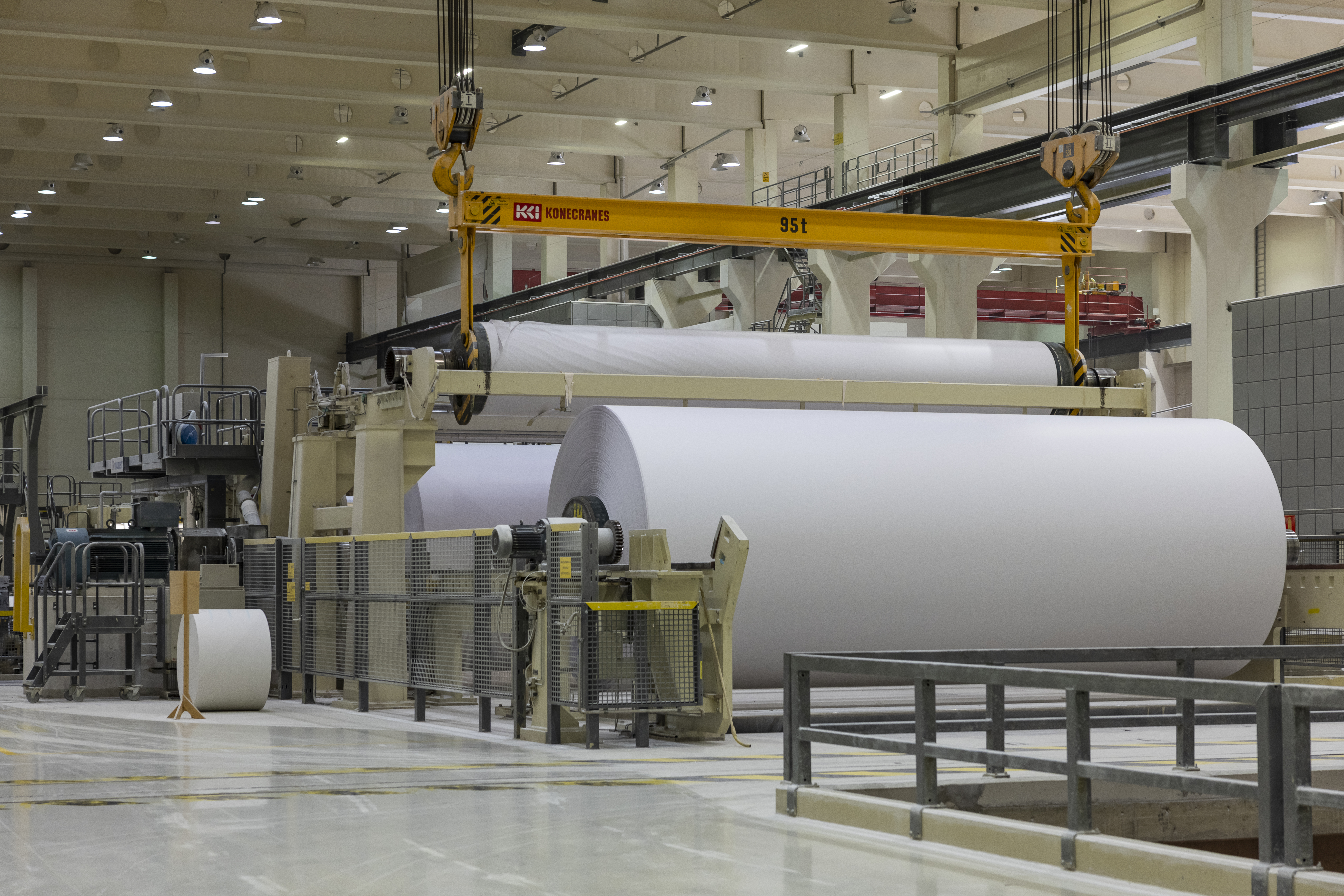A Digital Transformation Project for Smarter Production
However, fragmented data sources, manual AI model management, and the lack of real-time operational insights made it challenging to scale AI-driven improvements.
Without an integrated MLOps framework, SAPPI struggled with high maintenance efforts, limited automation, and inconsistent AI deployment across sites and centrally. To overcome these challenges, the company launched a comprehensive MLOps transformation aimed at enhancing automation, process optimisation, and sustainability.
The Need for AI-Driven Operational Efficiency
Beyond optimizing manufacturing operations, SAPPI wanted an AI solution that could support broader business objectives, such as enhancing sales forecasting, improving supply chain management, and ensuring seamless system integration.
By building a scalable MLOps framework, SAPPI aimed to create a foundation for long-term AI-driven decision-making across different business functions

A Scalable, Future-Ready ML at Scale Framework
SAPPI partnered with Orange Business to implement a scalable and automated ML at scale framework tailored for manufacturing optimization and business intelligence.
This solution was built on Google Cloud technologies, leveraging Vertex AI, Dataform, BigQuery, Airflow (GCP Cloud Composer), Terraform, and Looker to create a fully integrated AI-driven ecosystem that supports real-time analytics, predictive modeling, and automation.
A key part of this transformation was building a flexible framework that fits multiple use case’s needs, ranging from ingestion of external APIs, flexible management of project creation, granting of user and application rights, schedule and event-based processing, automated ML training and inference, monitoring, deployment and more.
By centralizing this approach, SAPPI ensures that AI models receive continuous, updates, follow a standard uniform approach, allowing for more easy maintenance and scaling. Using all this flexible building blocks, monitoring and automated deployment, SAPPI can now automatically retrain and optimize AI models, deploy, monitor and maintain them faster and better reducing manual effort and improving overall performance and reducing overall time from prototype to production. This automated approach enables SAPPI to deploy AI models faster, accelerate value creation by reducing the time from prototype to production, simplify maintenance, and increase automation across operations. With this new framework, SAPPI ensures that ML Engineers, Analytical Engineers and Data Engineers across all factories are connected, follow standardized processes and best practices, and can fully leverage the possibilities of the cloud for AI development and deployment..

Scalability for Future AI Innovations
With the ML at Scale framework designed by Orange Business, SAPPI has built more than just a solution for manufacturing efficiency—it has established a scalable AI-driven infrastructure that will continuously evolve.
By automating AI workflows, enhancing predictive analytics, and ensuring seamless data integration, SAPPI is now well-positioned to drive continuous innovation and operational excellence in the European market.
With the MLOps framework in place, SAPPI has already successfully developed and deployed three AI-driven use cases in production, running over 20 machine learning models. These models operate seamlessly within the framework, benefiting from automated deployment, monitoring, and retraining. By standardizing AI workflows, SAPPI can now efficiently scale future AI projects, ensuring faster time-to-value and streamlined operations across different business areas.

A framework to support future AI-driven use cases
SAPPI’s MLOps framework is designed to support future AI-driven use cases across various business functions. With this infrastructure in place, SAPPI can now extend AI capabilities to:
Sales Forecasting & Demand Prediction – By analyzing historical sales data, SAPPI can use AI models to predict product demand, helping to optimize inventory management and align production with market needs.
Supply Chain Optimization – Predictive analytics can help SAPPI optimize allocation of production over their production sites, optimize supplier coordination, and improve logistics efficiency and drive down costs.
Quality Control Automation – AI-powered visual inspection and anomaly detection enhance product quality monitoring, reducing defects and improving customer satisfaction.
Sustainability Tracking – Real-time AI monitoring of energy usage, carbon emissions, and resource consumption enables SAPPI to further reduce its environmental impact.
Key Figures
12
offices in Europe
4,200
employees
20
ML models
SAPPI Europe
Sappi is a global leader in woodfibre-based products, known for its innovation in sustainable packaging, speciality papers, dissolving wood pulp, and biomaterials. With operations across three continents and customers in more than 150 countries, Sappi combines decades of manufacturing expertise with


